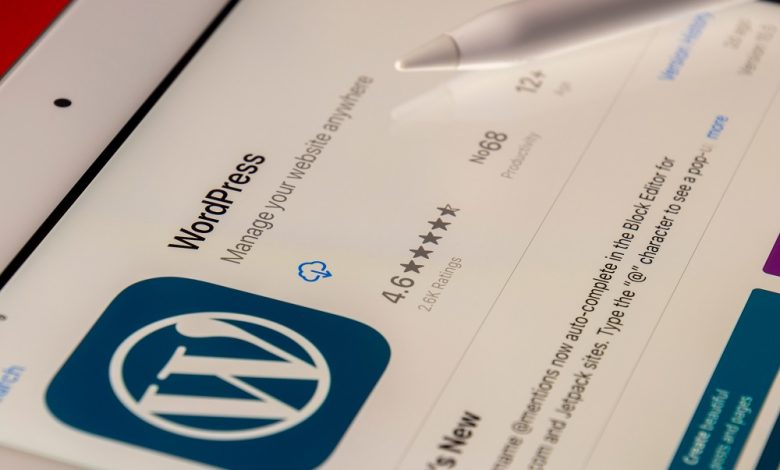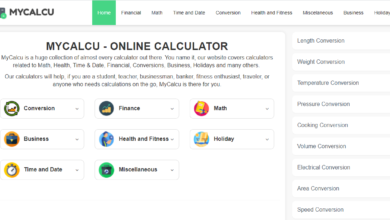HOW TO START A BLOG WITH WORDPRESS

WordPress is a free, easy-to-use, open-source software which enables you to create your own blog or website. It is so widely used that it powers over 43.3% of websites on the internet! It features a plugin architecture and a template system, so you can customize any website to your blog, business, portfolio, or online store. This means even if you don’t know anything about programming, you can use WordPress successfully.
We at Blog Oceans take pride in giving our readers valuable, to-the-point information on how to get things done, and this article is no exception. Read on to find out how you can use WordPress to start a successful blog and keep it running smoothly.
WHAT IS THE DIFFERENCE BETWEEN WORDPRESS AND HTML?
- WordPress is a content management system (CMS), while HTML is a markup language used to create websites.
- All WordPress websites use HTML, but not all HTML websites use WordPress.
- WordPress websites are great for non-professionals and beginners, whereas self-hosted HTML websites are best for experienced web developers.
- If your site does not require regular updates, revisions, or extra information, HTML is a preferable alternative since it will help your website function quicker. WordPress is the ideal solution for growing and regularly updating your company website.
- Most tasks, including creating or updating content and pages, customizing your site’s functionality and design, and improving and managing SEO, can be handled using the WordPress user interface rather than coding, which is not the case for HTML. With HTML, you’ll need to either hire a developer or have expert knowledge of programming and the software’s requirements.
- WordPress is highly adaptable. You can easily customize your site by using plugins and pre-made themes.
- WordPress is cost-effective and beginner-friendly. It does not require outsourcing work to any experts to run smoothly. HTML, on the other hand, requires maintenance, which does not come cheap because you either have to hire and pay a developer, or pay to learn how to be one yourself.
WHAT DO YOU NEED TO CREATE A SUCCESSFUL WORDPRESS BLOG?
To start a WordPress blog, you’ll need a few items, some of which are free and others of which will cost you money. They are:
- A domain name, which is simply the name of your blog, for example, google.com. It costs around $10 a year to get one registered specifically to you.
- A web hosting account, which serves as the “home” for your website on the internet.
- The free WordPress software.
- A theme for how your blog should look.
- A plugin refers to computer software that can add new programs to a host website without changing the host program itself.
STEPS INVOLVED IN CREATING A WORDPRESS BLOG
-
CHOOSE YOUR DOMAIN NAME
Your domain name is your blog’s permanent Internet address. For instance, ours is “blogoceans.com”. It plays a significant role in your blog’s identity and is also how people will find your site, so it’s a critical decision that you’ll want to get right.
Only one person can own a domain name at a particular time. This means if the name you want to use is already taken, you can’t use it. If you’re looking to acquire a ‘.com’ domain name, this might make it harder for you because some of your top choices may already be taken. Other domain extensions available include .co, .in, .org, and .net.
There are many domain search websites available which you can use to figure out if the domain name you have in mind is taken or not. GoDaddy.com and Instantdomain.com are two examples of good domain searchers.
-
PURCHASE YOUR DOMAIN NAME
To purchase your domain name, you’ll need the help of a domain registrar. It is a service that makes sure the name you have chosen is registered to you. It also assigns an IP address to your domain name. Domain.com, GoDaddy.com, Bluehost Network Solutions, HostGator, Namecheap, and DreamHost are among the best, easy-to-use domain name registrars in 2022.
Simply enter your domain name in the search box which will be provided. Add the proper domain extension. If it is already taken, the sites will suggest some other names similar to what you want that aren’t taken or provide a broker to help you buy the one you want from the current owner.
-
CREATE YOUR WEB HOSTING ACCOUNT
Web hosting is the engine that operates your blog’s software and offers your site’s content to visitors from around the world. To make your blog successful, select a host that will load your site quickly and consistently because people don’t like reading slow-loading blogs and so that your blog is always online and does not encounter downtime.
Bluehost, SiteGround, DreamHost, Hostinger, HostGator, and Flywheel are some of the best hosting companies. Open the hosting company’s website and click on “Get Started”. Select the plan you want to purchase and enter your domain name. Install WordPress and log in to your hosting account. Some servers require up to 24 hours to link your domain name to your hosting account, so don’t be ruffled if it doesn’t appear right away.
-
CREATE A NEW SITE
On the hosting account, create a new WordPress site. Fill in all the important details that pop up, such as tagline, username, password, what kind of site you’re creating, who it’s for, and what type of site it is. Pick the features of your site, like the theme, and create a logo if you want.
You will be redirected to the hosting account’s dashboard. Here, log in to WordPress. It’ll take you to your site’s backend, where you can write and edit your blogs, view comments, and change the look and feel of your blog.
-
CREATE YOUR BLOG PAGES
Add a few pages to your site to increase credibility and make your blog run smoothly. Home, About, Contact, Privacy Policy, a Legal page, Cookie Policy, Resources, a Hire Me page, Start Here and a Blog page are important ones you should start with. You can keep adding pages as you grow your blog and your needs change.
-
UPDATE YOUR URL STRUCTURE
This is modifying your permalink structure to ensure your URL structure is properly displayed. Under Settings, select Permalinks. Change your URL structure from “Default” to “Post Name”. Once this is done, your URLs will show up like this: https://www.blogoceans.com/sample-post/ instead of as https://www.blogoceans.com/?b=177
-
HOW TO ADD CONTENT FOR YOUR BLOG
In the large white box, type your content. Click Add Media to add any photographs, videos, or audio. You should be familiar with the elements at the top, which are pretty similar to what you’d see on Google Docs or Microsoft Word. You’ll see a couple boxes on the right-hand side that contain some self-explanatory commands like Publish, Page Attributes, and Featured Image.
The Publish box lets you choose when your blog should go live. Page Attributes let you pick a template and where your page appears on the website. Featured Image lets you pick specific images to use for your page.
-
WORDPRESS PLUGINS AND WIDGETS INSTALLATION
A plugin is a third-party programme that you can install on your website to offer additional functionality. Navigate to the left-hand menu and choose Plugins, then Add New. You’ll be sent to the Plugins page, where you can install a previously downloaded plugin, search for a specific plugin, or explore some of the most popular plugins used by WordPress bloggers. Click on Install Now and activate the Plugin when it is successfully installed.
Widgets give you complete control over what goes where and what you want to display. Go to the left-hand sidebar and select Appearance, followed by Widgets. You can do a lot with your widgets, but most people stick to the basics, such as a search bar, an email sign up form, a Facebook like box, or recent comments.
CONCLUSION
This concludes the steps involved in creating a blog using WordPress.
Also, Read WordPress Web Design Vancouver: Finding the Best Web Designers.





